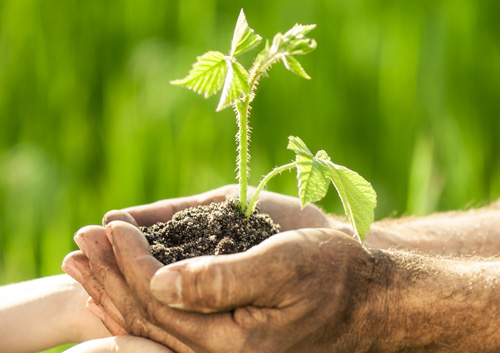
As the summer days are gone but the crisp fall days ahead are still full of sunshine, many of us still want to continue gardening well into the fall. Good news: many gardening enthusiasts believe that fall is one of the best times for planting. Often gardeners find they have fewer obstacles than in the spring planting season. Unlike springtime when plant roots can’t grow in frozen soil, in fall the soil is already warmed up. In addition, there is less danger of bad weather that can harm the plants. Pests and disease are often less of a problem as well. Finally, fall is a great time for planning ahead for spring flowers by planting bulbs for tulips and daffodils. Here are some guidelines about which plants do well in your fall gardening.
Hardy Mums are one commonly planted flower for fall. They’re called “hardy” for a reason — they stand up well to cool temperatures and also do well in abundant sunshine. Mums come in a variety of colors and can vary from summery yellows and bright oranges to crimson and pumpkin for fall.
Marigolds are a fantastic, bold addition to any flowerbed in your fall gardening plans. Traditionally planted in Mexican cemeteries in October to honor the dead, their bright gold and orange colors respond well to dead-heading and they re-flower often.
Sunflowers are another classic autumn flower that looks great in big bunches – just the perfect addition to your back-to-school décor. They grow tall, face the sun and can even produce seeds for a tasty snack. Plant sunflowers near the back of a flower bed, in full sun. Experts recommend staking them so they can grow upright – sometimes their heavy flower has difficulty remaining upright without a stake.
Gazanias are related to sunflowers and come in a variety of beautiful colors. They look great cut and they look great planted in large bunches in fall gardening flowerbeds.
If you’re interested in maintaining your vegetable garden through the fall, there are several options. Some vegetables actually need the soil to cool down to 75 degrees or lower in order to germinate best. Some options include kale, which holds up well through the autumn months, as does chard. In addition to being nutritious, kale and chard they also add an ornamental touch to the fall vegetable garden. Radishes, broccoli, rutabagas, Brussels sprouts and spinach can also be planted in the fall. Quick tip: many of these root vegetables reportedly taste sweeter when harvested after the first frost and make for a delicious Thanksgiving harvest.
If you’re thinking of landscaping and other home improvement projects, keep in mind that fall is an excellent time to plant shrubs, trees and even new turf grass. Gardening experts recommend watering freshly planted trees and shrubs regularly until the ground freezes so they’ll be off to a good start before winter.
With its sunny days and warm soil, fall is an excellent time to continue working in your garden. The best time for fall planting is generally about six weeks before your region typically receives its first frost. Whether you’re planting annuals, working on the garden or reworking your yard’s landscaping plan the cool weather and warm soil are a great recipe for rewarding fall gardening.

